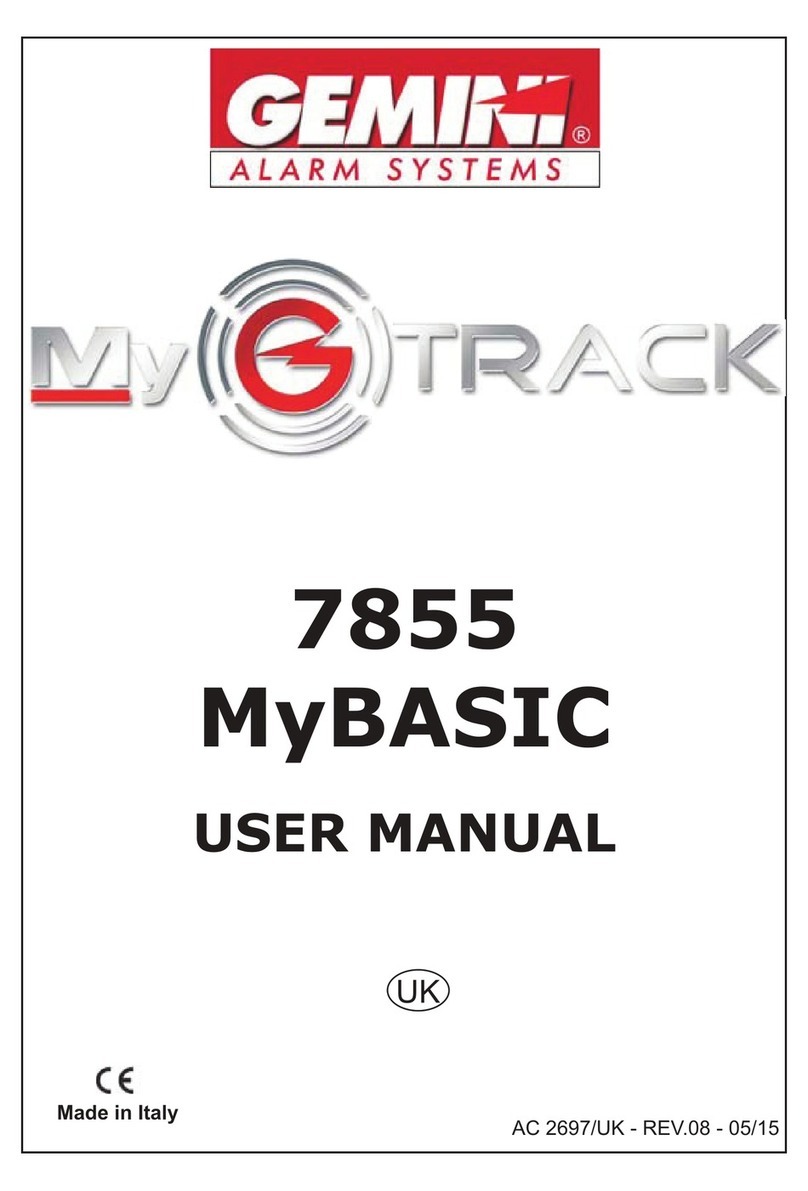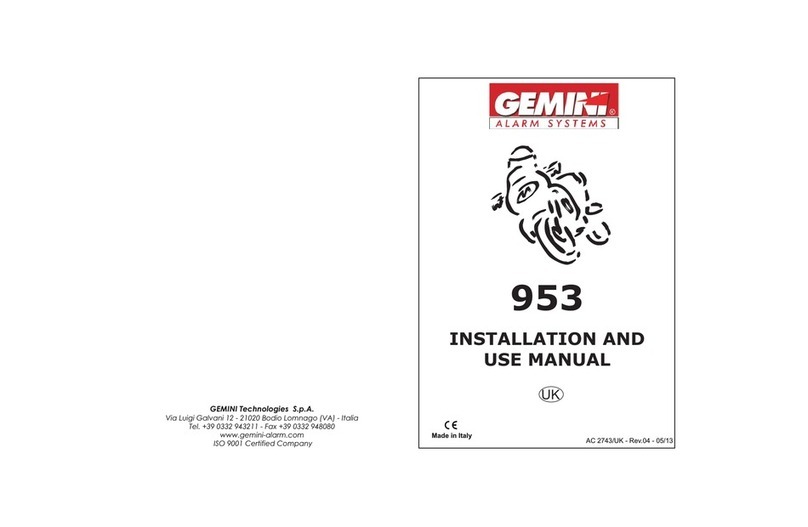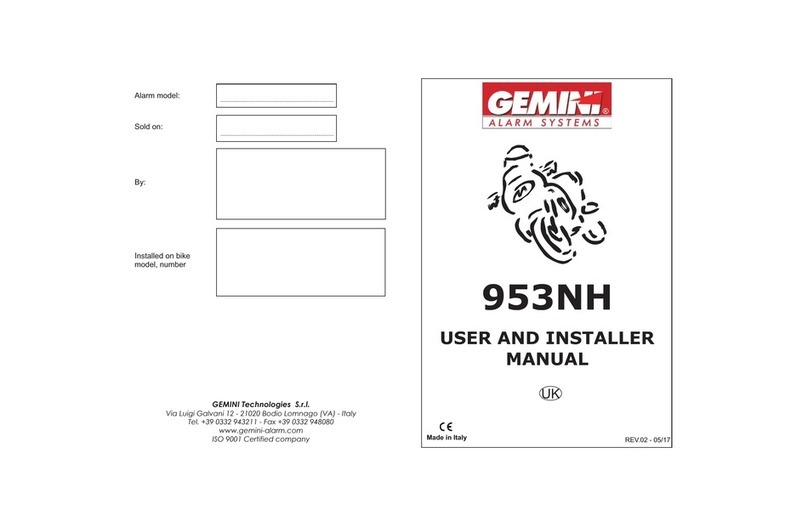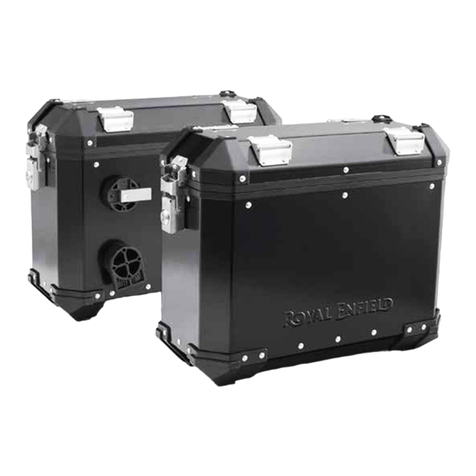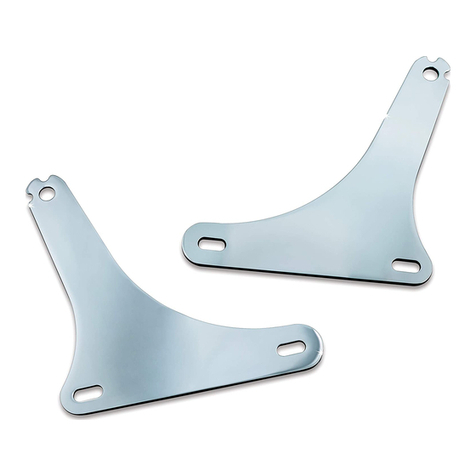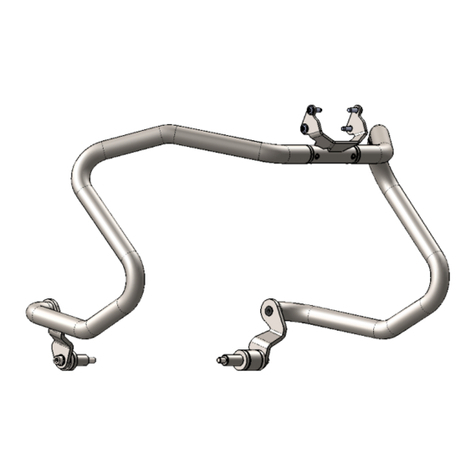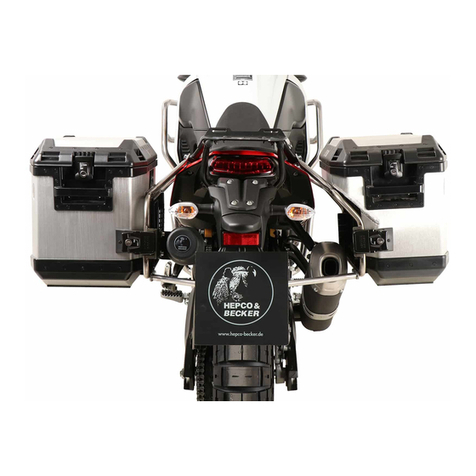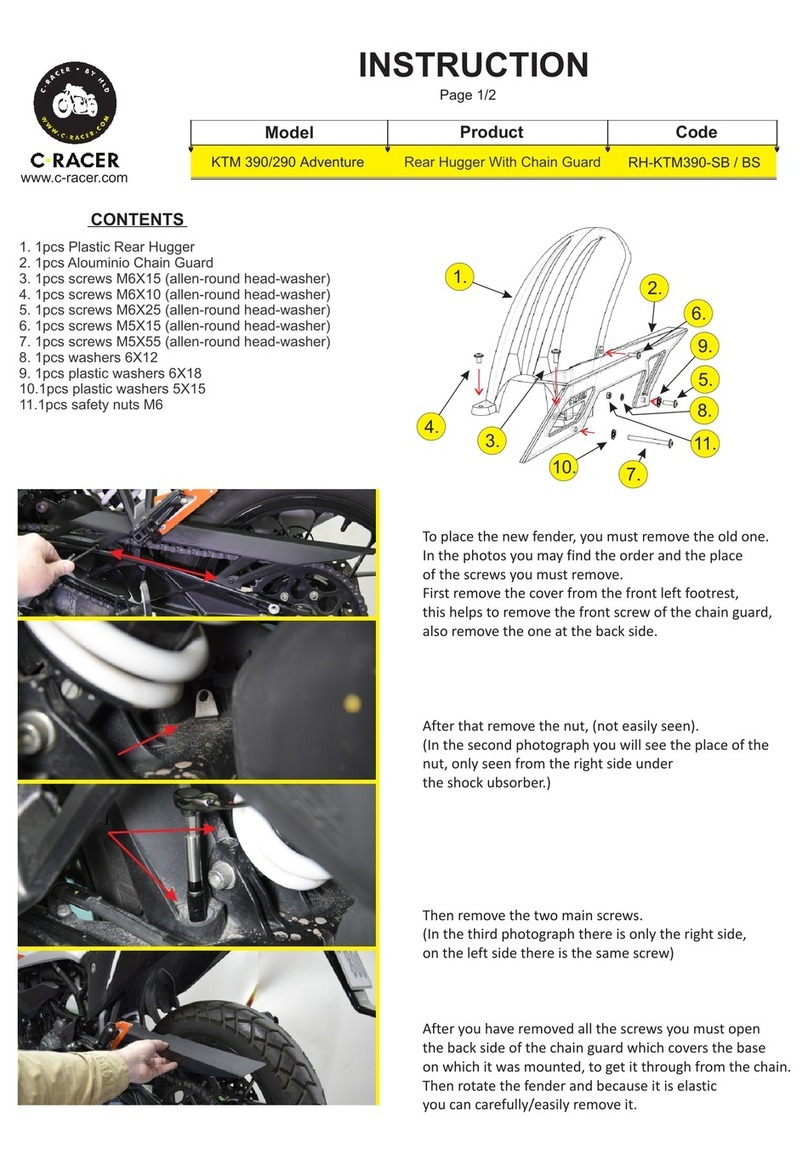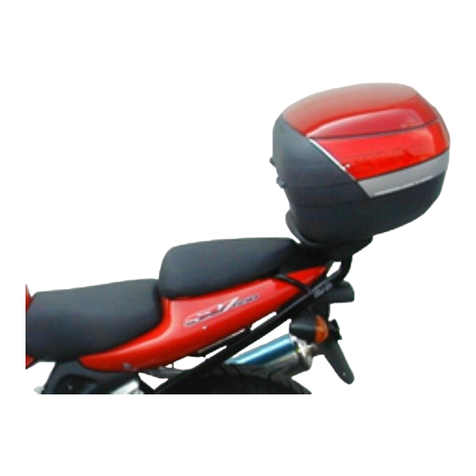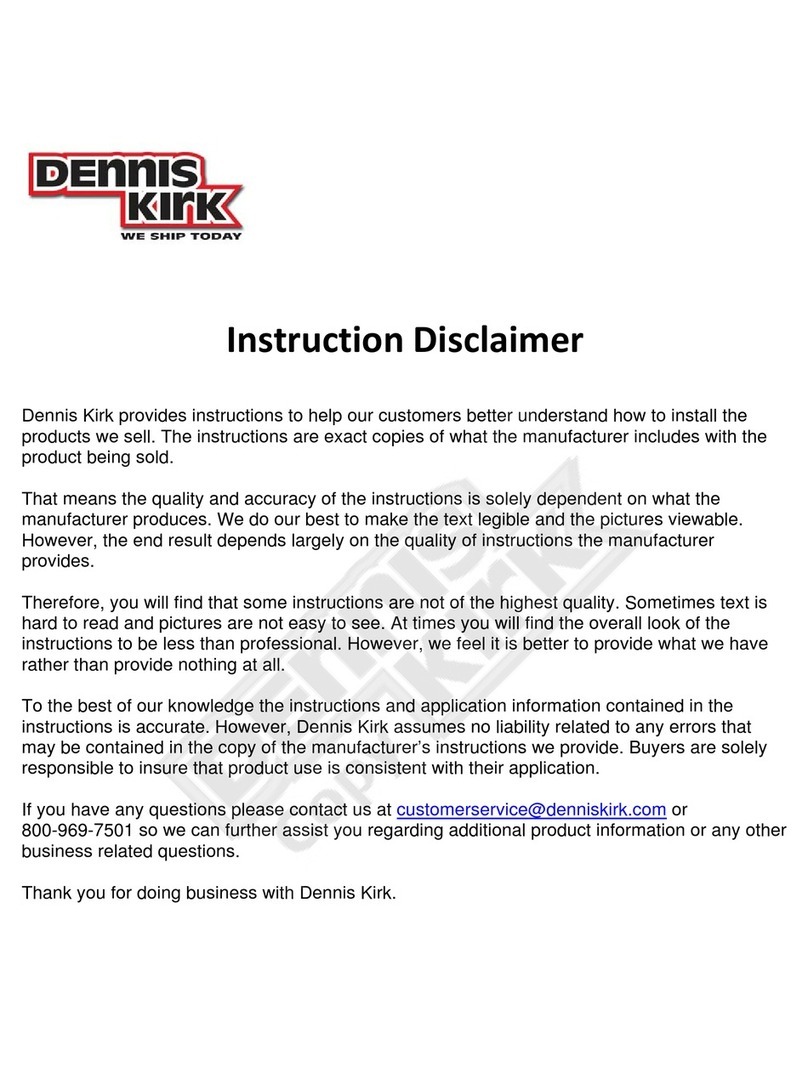Gemini 7854T User guide

7854T
INSTALLER MANUAL
GEMINI Technologies S.r.l.
Via Luigi Galvani 12 - 21020 Bodio Lomnago (VA) - Italy
Tel. +39 0332 943211 -
www.gemini-alarm.com
ISO 90001 Certified Company
UK
AC2684 Rev.03 - 06/22
Made in Italy

PRELIMINARY ADVICE
Please read all instructions and understand them thoroughly before
starting installation.
1.0 - PRELIMINARY ADVICE..........................................................
2.0 - ALARM POSITIONING............................................................
3.0 - ACCESSORIES POSITIONING..............................................
3.2 - Contact switch (optional).......................................................
4.0 - ALARM UNIT SEALING..........................................................
6.0 - ELECTRICAL CONNECTIONS...............................................
7.0 - WIRING DIAGRAM AND PINOUT...........................................
8.0 - DOUBLE ENGINE IMMOBILIZATION......................................
8.1- Electronic ignition....................................................................
8.2- Grounded wire.........................................................................
9.0 - PAIRING NEW DEVICES.........................................................
9.1 - With Brown/Green wire connection.........................................
9.2 - Without Brown/Green wire connection....................................
10.0 - PROGRAMMABLE FEATURES.............................................
11.0 - PROGRAMMING EXAMPLE.................................................
12.0 - REMOTE CONTROL.............................................................
13.0 - WASTE ELECTRICALAND ELECTRONIC EQUIPMENT.......
14.0 - TECHNICAL SPECIFICATIONS.............................................
3.1 - Electronic key receptacle......................................................
5.0 - ALARM POSITIONING FOR MAXIMUM SENSITIVITY..........
PAGE 02
PAGE 03
PAGE 04
PAGE 0
PAGE 0
PAGE 0
PAGE 06
PAGE 08
PAGE 09
4
4
5
PAGE 10
PAGE 10
PAGE 11
PAGE 12
PAGE 12
PAGE 13
PAGE 14
PAGE 15
PAGE 16
PAGE 17
PAGE 17
PAGE 2 PAGE 3
WARNING
!
CAUTION
NOTE
Non-compliance to this instruction could result in serious damage to the alarm
system and the vehicle itself.
Non-compliance to this instruction may cause serious damage or operational
failures to the alarm system.
Provides useful installation tips.
The following signal words are used throughout this manual to emphasize
important instructions or special information.
2.0 - ALARM POSITIONING
!
!
!
Fit th alarm as shown in the picture opposite to
prevent water entering the unit
Give the a ‘goose-neck’ bending as
shown and secure with a tie wrap.
.
e
.
Do not install the!
rubber sheath
The alarm unit must be installed in such a way as
not to muffle the siren but it must not be exposed to
atmospheric agents
Install the alarm away from moving mechanical
parts, electric or electronic components that could
generate high frequency electromagnetic
disturbances and away from devices that could
reach high temperatures when the vehicle is in use.
alarm unit directly on the vehicle
frame.
!
Do not install the alarm unit in this
position as water ingress over time
may seep through the rubber
sheath and permanently damage
the electronic circuit making the
alarm system unreliable.
Eventual malfunctioning due to
water infiltration is not covered by
warranty.
NO!
OK!
UK CONTENTS
WARNING
!
If a jet wash is used to clean the vehicle, protect the alarm unit from
water splashes and be careful not to expose it to high pressure jets.
The warranty will not cover damages to the system due to water
infiltrations caused by improper installation, improper jet washing or
the use of non original accessories, not approved by the
manufacturer.

PAGE 5
3.0 - ACCESSORIES POSITIONING
3.2 - Contact switch (optional)
A contact switch can be fitted to protect the seat or topcase. It must be installed
in such a way as to detect the opening of the seat/topcase without being
accessible from the outside. The trigger threshold must be carefully set to
avoid false alarms.
If no contact switch is fitted, the GREEN/BROWN wire will remain free for
other possible uses such as programming the alarm or learning new devices.
NB:
Do not ground the switch terminal to the vehicle frame make a connection to
earth through a negative cable such as the indicator lamp negative lead.
Override
key
PAGE 4
Override key
Example of receptacle positioning on the vehicle
plastic side cover
4.0 - ALARM UNIT SEALING
Alarm unit sealed
To seal the alarm, position the
rubber cap over the external edge
of the alarm housing.
Pull the plastic rectangular flange
over the rubber cap and secure
with the supplied screws.
Do not over tighten.
3.1 - Override key receptacle
The receptacle with built-in LED must be installed where it can readily be seen
and accessed by the user. Before drilling a hole in the plastic dash with a 13mm
drill bit, check the position of the handlebars with the steering lock engaged.
Make sure the LED will not be covered by the handlebars when the vehicle is
parked.

5.0 - ALARM POSITIONING FOR MAXIMUM
To ensure correct operation of the built-in motion sensor, install the alarm as
illustrated below.
SENSITIVITY
1
Figure 3: motion sensor
operation with alarm fitted
horizontally, siren facing up or
down.
The sensor will detect any
movement of the motorcycle
in any direction.
3
2
45°
MAX
45°
MAX
Figure 1:
Figure 2:
horizontal
positioning.
maximum
applicable inclination.
OK
OK OK OK OK
Figure 5: motion sensor operation
with alarm fitted vertically (only for
vehicles with a centre stand).
To prevent water from entering the
unit, the wire rubber sheath must be
turned downwards.
NOTE: Prior to fitting, test the operation of the sensor to confirm it will work
in the intended position.
5
Figure 4: motion sensor operation with siren facing sideways (only for
vehicles with a side stand).
The alarm can be fitted on either the right or left side of the vehicle as long
as the siren is turned towards the right side of the vehicle (opposite to the
stand).
4
PAGE 6 PAGE 7

6.0 - ELECTRICAL CONNECTIONS
ENGINE IMMOBILISATION by CUTTING WIRES
ENGINE IMMOBILISATION by GROUNDING WIRES
WIRE COLOR
WIRE COLOR
WIRE COLOR
Black marked “M”
Black marked “R”
Orange
Orange
Black marked “G”
Green/Brown
-----
Yellow/Black
White/Violet
BLACK marked “B”
BLACK marked “H”
BLACK marked “HB”
BLACK marked “H1”
BLACK marked “B1”
BLACK marked “B”
BLACK marked “HB”
BLACK marked “H”
BLACK marked “H1”
BLACK marked “B1”
Connect to battery negative terminal
Connect to battery positive terminal
Connect to right turn indicator light
Connect to left turn indicator light
Connect to ignition (+15/54)
Connect to seat/topcase contact switch
-----
Negative output in alarm
Device pairing
Connect to key switch cut end
Connect to vehicle electric system cut wire
Not applicable
Connect to ignition switch positive
Connect to ignition switch wire
CONNECTION
CONNECTION
CONNECTION
Ground to negative
(do not connect to vehicle chassis)
Connect to the cable end which, if grounded, will lock the
engine
Not applicable
Connect to ignition switch positive
Connect to ignition switch wire
Ignition key
Vehicle
battery
Black marked “HB”
Black marked “H1”
Black marked “B”
Black marked “B1”
Black marked “H”
Normally open contact
Normally close contact
Common contact
Common contact
Normally close contact
Orange
Orange
10A Red
Battery
12 Volt
Brown
Yellow
Green/Brown
Ground
Engine immobilizer
Green/Black
15A
15A
Receptacle
with built-in
LED
Override
key
lack marked “B1”
Brown
3 Black marked “M”
4
5
6
7 Yellow/Black
8 Black marked “G”
9
10 Black marked “H1”
11 Green
2 Black marked “H”
3 Black marked “B”
4 Black marked “HB”
5
6
17 Black marked “R”
8
1B
2
White/Violet
Green/Brown
-----
Black
1
1
1
1 Orange
1 Red
15 Orange
1 Black
:
Earth for override key
: Power supply earth
: input
: input
: -----
:
: gnition key
: Negative output for
:
Override key input
: Engine immobilizer (N.C.)
: (Com.)
: (N.A.)
: indicator light
:
:
:
Antenna
Engine immobilization
:
Negative output in alarm
I positive
LED
Engine immobilization
:
Engine immobilizer
Engine immobilizer
Turn
Positive output for LED
Turn indicator light
Positive power supply
:
Panic siren
Contact switch
WIRING CONNECTOR
Connections
for turn
indicator light
Installation
should be
mandatory
Seat topcase
switch
/
Optional fuse ( )recommended
161718
89
12
4
14
6
10
2
15
7
11
3
13
51
PAGE 8 PAGE 9
7.0 - WIRING DIAGRAM AND PINOUT

STARTER
SWITCH
BLACK
MARKED “B1”
BLACK
MARKED “B1”
BLACK
MARKED “B”
BLACK
MARKED “B”
BLACK
MARKED “H1
BLACK
MARKED “H1
BLACK
MARKED “H”
BLACK
MARKED “H” IGNITION
+15/54
IGNITION
+15/54
IGNITION
Example N.1 Example N.2
8.0 - DOUBLE ENGINE IMMOBILIZATION
NOTE: above examples are merely indicative and not restrictive.
To vehicle engine
To vehicle engine
BLACK H1
N.C. BLACK B1
COM.
BLACK HB
BLACK H
N.C. BLACK B
COM.
GROUND
IGNITION
STARTER
SWITCH
8.2 Grounded wire
NOTE: above examples are merely indicative and not restrictive.
BLACK
MARKED “B1”
BLACK
MARKED “B1”
BLACK
MARKED “B”
BLACK
MARKED “B”
BLACK
MARKED “H1”
BLACK
MARKED “H1”
BLACK
MARKED “H”
BLACK
MARKED “H”
+15/54
IGNITION
+15/54
IGNITION
Example N.1 Example N.2
To vehicle engineTo vehicle engine
BLACK H1
N.C. BLACK B1
COM.
BLACK HB
BLACK H
N.C.
N.O.
BLACK B
COM.
PAGE10 PAGE11
8.1 - Electronic ignition

9.0 - PAIRING NEW DEVICES 9.2 - Without BROWN/GREEN wire ground connection
!
!
!
!
!
T
or sensor
)
A Bop and turn will confirm the end of the
procedure.
To pair a new device, proceed as follows:
Arm and then disarm the alarm via remote control or override key.
urn ignition key to ON
The status LED will turn ON for 1 sec.;
While the LED is ON, simultaneously press both buttons on the remote
control or touch the override key to its receptacle.
Two flashes of the turn indicators, a Beep and a Bop will confirm the
system is in learn mode.
Depending on which device is to be paired either press one of the remote
control buttons OR touch the override key to its receptacle OR make the
magnetic contact transmit (bring contact and magnet together and then
move apart) OR press the button on the opening detector, make the
infrared sensor transmit (refer to
sensor instructions .
If another device needs to be paired, wait 2 sec. before doing so.
To exit learn mode , turn ignition key OFF.
a flash of the indicators
.
Make sure passive arming is disabled.
!
!
!
!
!
wireless hyper-frequency
PAGE12 PAGE13
9.1 - With BROWN/GREEN wire ground connection
The alarm is supplied with 2 remote controls and 1 override key but other
optional devices can be added.
CAUTION
Alarm memory will only store 8 devices.
Saving an extra device will automatically delete the first one.
To pair a new device, proceed as follows:
Arm and then disarm the alarm via remote control or override key.
Lift the seat or open the topcase or, if there is no contact switch, ground the
BROWN-GREEN wire.
Connect the WHITE-VIOLET wire to ground.
Turn ignition key to ON.
Two flashes of the turn indicators, a Beep and a Bop will confirm the system
is in learn mode.
Remove the WHITE-VIOLET wire from ground.
Depending on which device is to be paired either press one of the remote
control buttons OR touch the override key to its receptacle OR make the
magnetic contact transmit (bring contact and magnet together and then
move apart) OR press the button on the opening detector, make the infrared
sensor transmit (refer to sensor
instructions .
A flash of the turn indicators and a Beep will
To pair another device, ground the WHITE-VIOLET wire for 1 sec.
To exit learn mode, turn ignition key OFF.
a flash of the indicators
Close the seat/topcase or remove the BROWN/GREEN wire from ground.
!
!
!
!
!
!
!
!
!
!
!
!
!
Make sure passive arming is disabled.
or sensor
)
confirm the operation has been
completed successfully.
ABop and turn will confirm the end of the procedure.
wireless hyper-frequency

PAGE14 PAGE15
TO ENABLE TO DISABLE
Press button 1
Press button 2
EXIT PROGRAMMING
10.0 - PROGRAMMABLE FEATURES
With the alarm disarmed, lift the seat or
topcase.
Turn ignition key to ON.
The LED will light up for approx. 1 sec.
Acoustic signals
Panic siren
4
2
3
1
While the LED is ON simultaneously
press the 2 buttons on the remote control.
A Beep and a Bop will confirm the system
is in programming mode.The LED will light
up steady.
After pressing both buttons simultaneously (step 4), program the features
according to your needs.
Button 1: TO ENABLE
Button 2: TO DISABLE
Button 1: TO ENABLE
Button 2: TO DISABLE
11.0 - PROGRAMMING EXAMPLE
!
!
!
!
!
!
With the alarm disarmed, l opcase.
.
While the LED is ON, simultaneously press the 2 buttons on the remote
control. wo Beeps system is in mode.
The LED will turn ON steady
, will confirm that s
have .
When the last feature is programmed, the system automatically exits the
programming mode. Three followed by will confirm the end of
the procedure. T status LED will also OFF
exit ignition
Pf
NB:
To help you understand the programming procedure, here below is an
example showing how to enable both features.
Keep in mind that, at every button press, the system automatically scrolls to the
next feature.
ift the seat or open the t
Turn ignition key to ON; the LED will light up for 1 sec
T will confirm that the programming
.
Press remote control button 1 a Beep acoustic signal
been enabled
Press button 1 again, a Beep will confirm that the panic siren has been
enabled.
Bops a Beep
he turn .
Turn ignition key OFF and close the topcase/seat.
You can programming mode at any time by turning key OFF.
rogrammed eatures will automatically be saved while the others will remain
unvaried.
!
To either enable or disable one of the programmable features proceed as
indicated hereafter.
NB: Remember to ALWAYS arm and disarm the alarm before programming.

PAGE16 PAGE17
12.0 - REMOTE CONTROL
The remote control has 2 different function buttons each of which corresponds
to a control signal that activates a selected action according to the operational
condition and alarm configuration.
The textured button is for arming/disarming the alarm while the smooth button
is used to exclude or trigger the siren.
Button 1
LED
indicator
Button 2
Button 1
Button
:
2:
• Arm/disarm alarm unit
• Trigger/Stop p alarm
• Exclude siren (mute alarm)
anic
• Activate Hazard lights
Separate the shell
halves taking care
not to damage the
internal circuit.
Close the plastic
shells and make
sure the remote
works properly.
Remove the
discharged batteries
and insert the new
ones taking care not to
invert the polarity.
13.0 - WASTE ELECTRICAL AND ELECTRONIC EQUIPMENT
The present device falls within the field of application of the current WEEE
Directive. The crossed-out wheeled bin symbol on the equipment or on its
packaging indicates that the product, at the end of its useful life, must be
discarded separately from other waste to allow adequate treatment and
recycling.
The user must therefore take the equipment, at the end of its useful life, to an
appropriate waste collection facility.
The remote control has a low charge battery indicator that gives you early
warning to avoid malfunctioning. When the batteries are fully charged, the LED
will show a steady light at the press of a button. If the batteries are too weak for
normal operation, the LED will start blinking at the press of a button. To replace
the batteries proceed as follows:
BATTERIES
12 Vdc
< 1mA (alarm armed and LED flashing)
< 1µA
118 dBA @ 1 meter
8A
14.0 - TECHNICAL SPECIFICATIONS
Nominal supply voltage
Load @ 12Vdc
Load in sleep mode
Siren output level
Relay capacity
WARNING
!
U
.
se only CR1616 batteries.
Different type batteries can seriously damage the remote control unit.
Discard used batteries properly in special dedicated containers
Other manuals for 7854T
2
Table of contents
Other Gemini Motorcycle Accessories manuals
Popular Motorcycle Accessories manuals by other brands
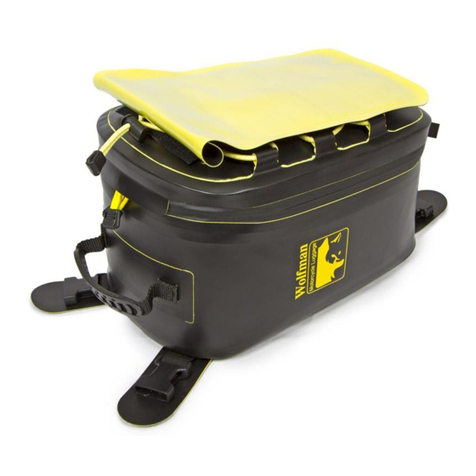
Wolfman
Wolfman Enduro Mounting instructions

SW-Motech
SW-Motech SBL.01.971.10000/B Mounting instructions
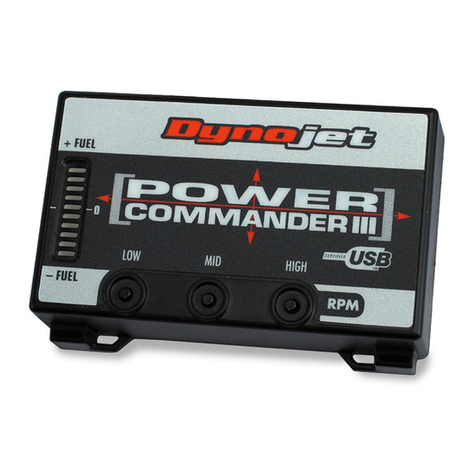
Dynojet
Dynojet Power commander 3 installation instructions
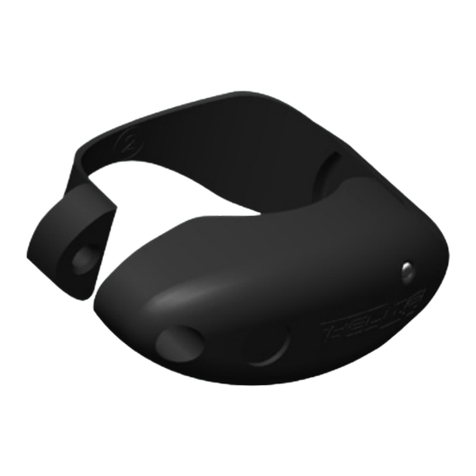
Helite
Helite SDUM0720201 user guide

hepco & becker
hepco & becker 70076110001 manual
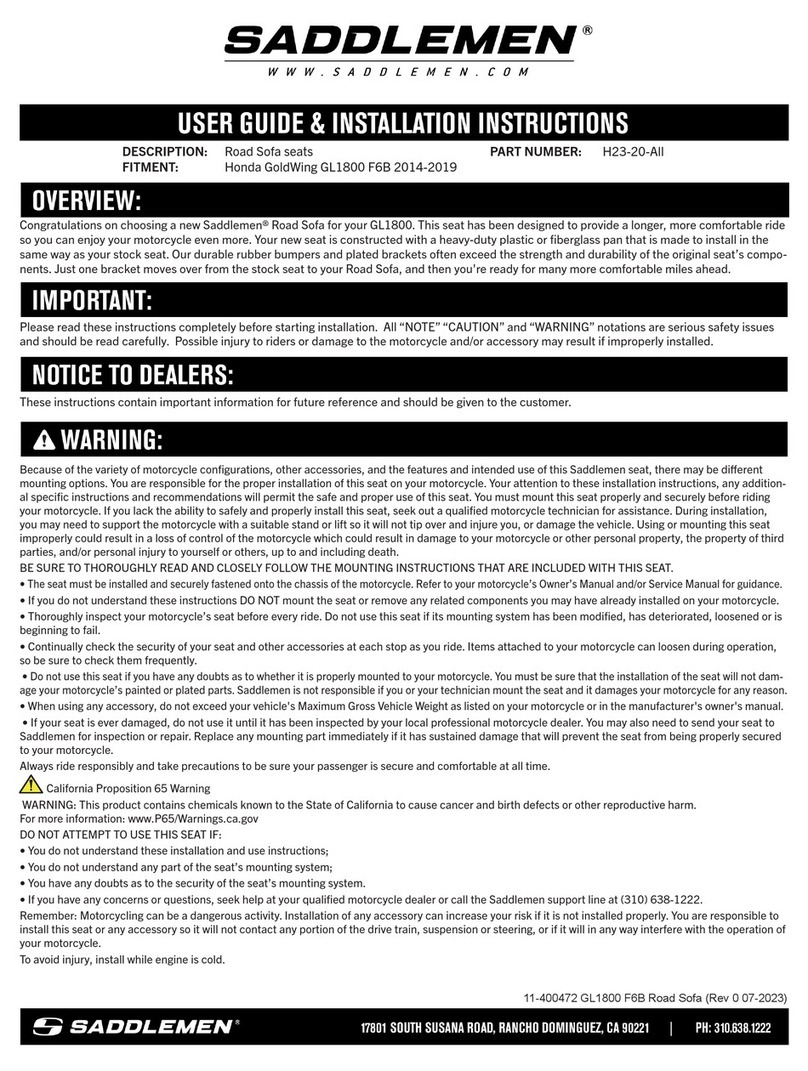
Saddlemen
Saddlemen H23-20-All User's guide & installation instructions
